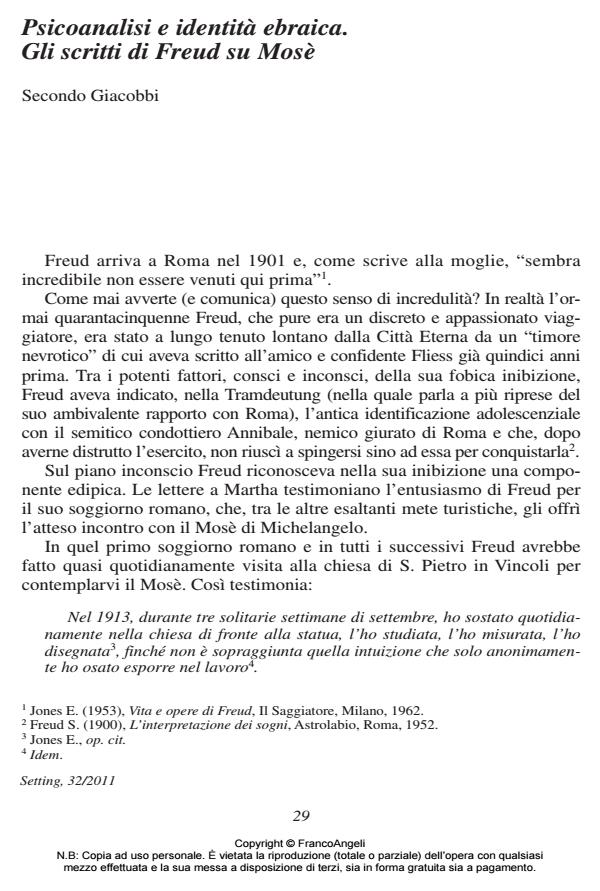Psicoanalisi e identità ebraica. Gli scritti di Freud su Mosè
Journal title SETTING
Author/s Secondo Giacobbi
Publishing Year 2013 Issue 2011/32
Language Italian Pages 17 P. 29-45 File size 503 KB
DOI 10.3280/SET2011-032002
DOI is like a bar code for intellectual property: to have more infomation
click here
Below, you can see the article first page
If you want to buy this article in PDF format, you can do it, following the instructions to buy download credits

FrancoAngeli is member of Publishers International Linking Association, Inc (PILA), a not-for-profit association which run the CrossRef service enabling links to and from online scholarly content.
The article analyses the peculiar and complex relationship between Freud and the figure of Moses. During his journeys to Rome, that he often postponed, Freud used to stand for hours in front of Michelangelo’s sculpure. The Viennese man recognized in Moses the personification of the power of Ego, which is able to repress and dominate the drives. In his work Moses and Monotheism - whose publication was postponed for a long time - Freud traced Moses’ life back to the primogenial myth of the patricide and identified the prophet with the non Jewish founder of the Jewish identity. Based on the hypothesis of an Egyptian Moses, the work suggests a theory which is outrageous for the Jewish world, but at the same time convincing and recently reproposed by archaeology and Egyptology. Freud identifies himself with Moses and perceives himself like the founder of psychoanalysis, the new "religion" that he aimed at setting free from the identification with the Jewish world. In the relationship with Moses, non Jewish father of Judaism, Freud also lives the intense and conflictual relationship with his own father. Apart from the anthropological, religious and clinical psychoanalytic issues, Freud’s work is striking for its extraordinary boldness and intellectual freedom.
Secondo Giacobbi, Psicoanalisi e identità ebraica. Gli scritti di Freud su Mosè in "SETTING" 32/2011, pp 29-45, DOI: 10.3280/SET2011-032002